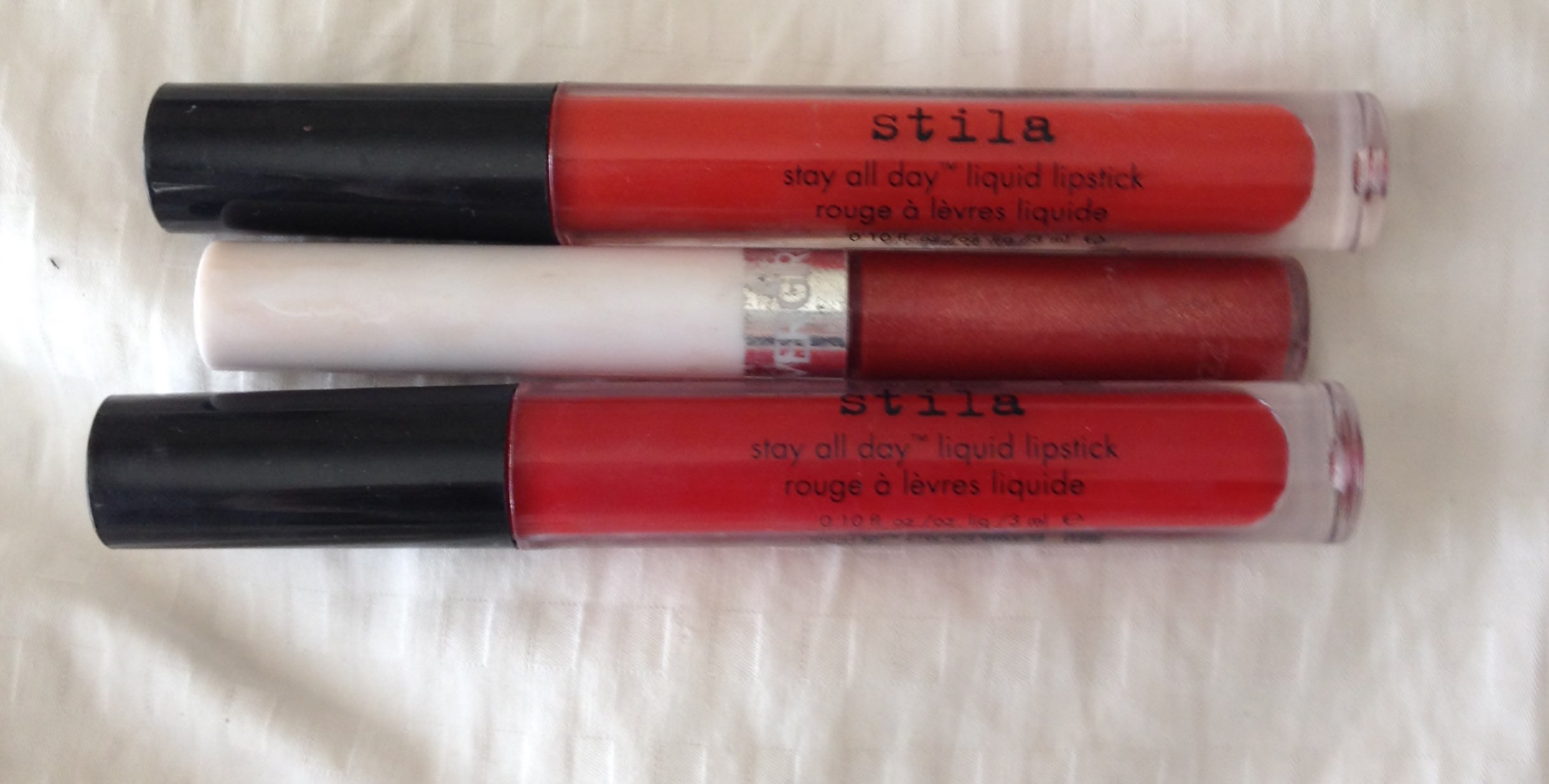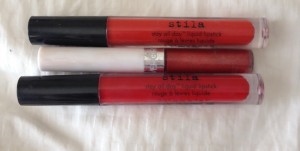Sexual Assault Awareness, an interview with Red My Lips Founder, Danielle Tansino

April is Sexual Assault Awareness Month. And all month I will be participating in Red My Lips, a campaign against sexual violence.
I learned about the campaign just a couple of days ago on Twitter. A friend of mine, Miranda Radik, posted on her blog about Portland State University’s “Stop Sexual Assault” campaign advising students on staying safe. I got angry and went on a social media rant about rape culture when someone asked me to get involved. I agreed pretty much immediately.
We have a serious problem in our culture when even Portland State University—a place that should be liberal and conscious enough to be aware of rape culture—is still walking the line of blaming sexual assault victims. This implies that we are responsible for educating ourselves and protecting ourselves from being raped. What we need is to have serious conversations about what consent is and how to avoid having non-consensual encounters.
I’ve talked in the past about my experiences with being assaulted. I think it’s incredibly important that we keep having these conversations. Because the one thing I learned from being raped is that rape does not look or feel like what you’ve been conditioned to think it is. Even rape victims don’t necessarily know they are being or were raped. We recognize rape as being violent and obvious. But many times it’s subtle, and involves coercion that is not immediately recognizable as physically threatening.
The trope that women must protect themselves at all cost from being raped (as if men cannot get raped and are incapable of stopping themselves from raping while simultaneously completely erasing everyone who isn’t straight and cis) is a sneaky trick used to make us believe that we have a choice. You can CHOOSE to protect yourself and not make yourself into a victim. But that’s the thing about sexual assault, you don’t have a choice.
So this month, I will be wearing red lipstick. Every day. Everywhere I go. And I will be talking about sexual assault, harassment, and rape culture when I can.
I encourage you to get involved with Red My Lips with me.
The interview with Red My Lips Founder Danielle Tansino:
What exactly is Red My Lips?
Red My Lips is an international campaign where supporters are asked to wear red lipstick all throughout the month of April – Sexual Assault Awareness Month. Participating in the campaign allows supporters to raise visibility related to sexual violence, combat rape culture and victim-blaming, and demonstrate solidarity and support for all those affected.
How did Red My Lips come to be?
Red My Lips was created as part of my own healing process, after I was raped in 2011. I didn’t respond in the way I thought a “typical victim” does (even though, intellectually, I was aware that no such thing exists). I was not quiet. I was vocal. And angry. I was shocked to discover that so many people viewed what happened as some sort of natural consequence of poor decision-making on my part. From a counselor (who specialized in treating trauma) that said I was “partly responsible,” to a female district attorney that told me that “jurors don’t like girls that drink,” to loved ones that compared the attack to my walking in a thunderstorm carrying a metal rod and getting hit by lightening. Many others seemed to want me to just be quiet and “learn my lesson.” If I hadn’t experienced this firsthand, I would not have believed that these responses were the norm. I thought to myself, “No wonder people don’t report. No wonder no one has any idea how common this is.”
I realized that part of my healing had to involve shining a light on how ludicrous this all was. But it’s hard to get people to talk about something that no one wants to talk about. Eventually, I realized people needed an easy way to approach something so painful. Red My Lips was that way.
What is the goal of Red My Lips?
There are several goals. I would say that the main goal is for survivors to feel and SEE support support on the faces of those around them. Even if there were no other outcome beyond that, I would consider the campaign “successful.”
A longer term (and more complicated) goal would be to change the way we talk about sexual violence. To dispel the myths that lead us to deny the pervasiveness of this issue and blame victims. My hope would be that we would begin to challenge the bizarre idea that rape and sexual violence are some kind of natural disaster or expected consequence of doing things you shouldn’t, when “you should know better.”
Wearing red lipstick seems pretty benign. How is this not slacktivism?
Fair question. However, anyone who has ever picked out and applied red lipstick knows that it is far from a walk in the park! And to do so day after day, for 30 days, takes a sustained dedication of time, energy, and attention. But, could someone conceivably put on lipstick for a picture and check it off their activism ‘to do’ list without really giving it much thought? Yes.
However, the reality is that there is a reason people avoid talking about sexual violence – it’s painful and overwhelming. It stirs up a lot for those who have experienced it and for those who haven’t, as well. Therefore, it takes a level of courage to confront the issue in any way. One positive aspect of the campaign is that it allows people to engage at a level that they are most comfortable.
How does your campaign acknowledge male victims of sexual assault?
One of the most common misconceptions about the campaign is that we use red lipstick to symbolize the fact that women are victimized at higher rates than men. However, when we take children into consideration, the numbers are actually more close than many realize. Aside from this fact, the red lipstick in the campaign is not used as symbolic reference to gender. It is used as a tool to disrupt the victim-blaming, silence and invisibility that are so typically connected with sexual violence. Though victim-blaming tends to be a more common response when the victim is an adult female, silence and invisibility do not discriminate when it comes to age or gender.
Participating in Red My Lips is a gesture of solidarity and support for ALL survivors.
Some people aren’t comfortable wearing red lipstick, how can they support Red My Lips?
Supporters are encouraged to participate in any way that they feel comfortable. This year, we are excited to offer Red My Lips temporary tattoos, which can be used as an addition or alternative to lipstick. One reason this is a great option is that it involves people committing to a similar task: creating visibility by putting something on their body for 30 days. Plus, who doesn’t like a temporary tattoo?!
Aside from this option, supporters have really been pretty creative. Some people have sported lipstick marks on their cheeks, baked red lip shaped cookies, or made artwork incorporating red lips. Again, since the main goals are to create visibility and increase conversations, there are all kinds of ways one can do this!
If you could give a quick and dirty list of talking points for people who want to raise awareness but might not be as aware as they could be, what would you tell them?
This is a great question! I’m honestly not sure that I will do this justice, but here goes:
– Sexual Violence is never the victim/survivor’s fault. EVER. They are never responsible. Not 75% responsible, not 5%. Victims are 0% responsible…in all cases. Always.
– We blame victims because it’s easier than facing the reality that anyone could be victimized and that people we know (and perhaps like) are capable of doing horrific things.
– Whether or not you’re aware, YOU KNOW someone (and likely MANY people) who have experienced sexual violence. If you don’t think you know someone, it’s only because they haven’t told you.
– Vulnerability does NOT EQUAL responsibility. You are responsible for the choices you make and how it affects you and other people. You are NEVER responsible for the choices someone else makes, particularly someone else’s decision to harm you.
– Sexual violence is not a natural disaster. Or a car accident. Or leaving your car unlocked in a bad part of town. (We love our car metaphors.) It is a decision made by a human being to violate another human being. Writing off sexual violence as an accident, or as something perpetrated by a “monster,” is unhelpful and simply untrue.
– You don’t have to explicitly use the words “you were asking for it” to be victim-blaming. Asking why someone “went there,” “wore that,” “drank so much,” “wasn’t more careful,” etc. is the equivalent of saying they were “asking for it.”
– Victim-blaming is not always deliberate. However, it is always harmful.
– Victim-blaming leads to more rape. Victim-blaming does not just harm and re-traumatize victims/survivors, it communicates to rapists that what they did was OK. This allows rapists to continue to rape without consequence.
– Lastly, those who say “What about the women who are just lying for revenge and/or because they regret consensual sex?” — Less than 8% of reported attacks are “false.” (And not all reports that are categorized as “false” means that it was a lie.) Additionally, a large percent of rapes are never reported. I once read than it is more common for someone to fake their own death than lie about being raped.
Who should participate? Is this just for assault survivors?
Sexual violence affects EVERYONE. Therefore, anyone/everyone can and should participate who: 1) wants to show support and solidarity for those who have experienced sexual violence, 2) believes/understands that sexual violence is NEVER the victim’s fault, and 3) are willing to take a stand in a visible way.
In addition to adults participating, some supporters have used the campaign to spark age-appropriate conversations with their children. Last year we had a number of parents whose children became mini-activists in spreading important messages such as: “no one deserves to be hurt.”
Is there anything you want people to know about Red My Lips that I haven’t asked?
The response to the campaign has been pretty inspiring. Though our main goals currently focus on raising awareness, we are looking to establish Red My Lips as a charitable Foundation. This way, in the future, supporters will be able to raise both awareness and funds with their red lips!
So for the next month, my weapons against rape culture will be these:

On my loud mouth.
We can stop sexual assault, but first we need to educate the world that “stopping sexual assault” does not automatically default to mean “from happening to you.” So even if you’re not going to wear red lipstick for a month, please at least have this conversation with everyone you know whenever you can.




